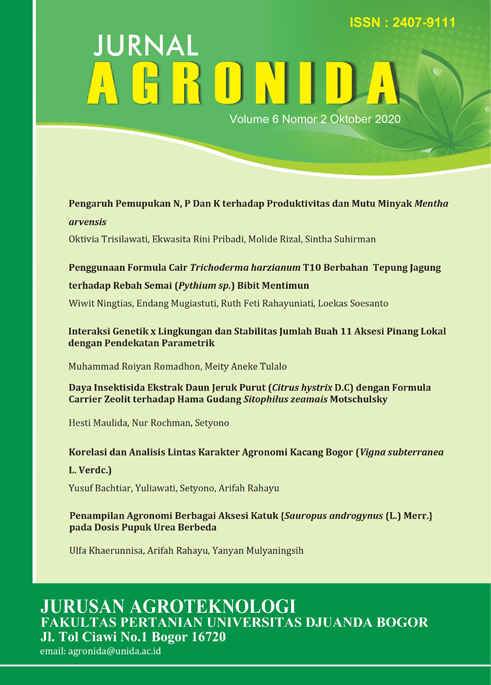Main Article Content
Abstract
The study was aimed at assessing the growth, production, and quality of spinach (Amaranthus tricolor L.) given various rates of chicken manure and potassium nitrate (KNO3). A completely randomized design with two factors was used. The first factor was levels of chicken manure, namely 0 g, 50 g, 100 g, and 150 g per polybag. The second factor was levels of potassium nitrate (KNO3) fertilizer, namely 0 g, 0.25 g, 0.5 g, and 0.75 g per polybag. Results showed that chicken manure application significantly affected plant height on 14 days after planting (DAP) and number of leaves on 14 and 21 DAP. Potassium nitrate application gave significant effects on number of leaves on 21 DAP. Chlorophyl content of spinach leaves given by 150 g chicken manure per polybag increase at low dosage of KNO3 (0.25 g per polybag). Combination treatment of 150 g chicken manure and 0.75 g KNO3 fertilizer per polybag gave better effects on biomass fresh weight, shoot dry weight, and root dry weight than other treatment combinations.
Key words: number of leaves, biomass fresh weight, chlorophyll content
